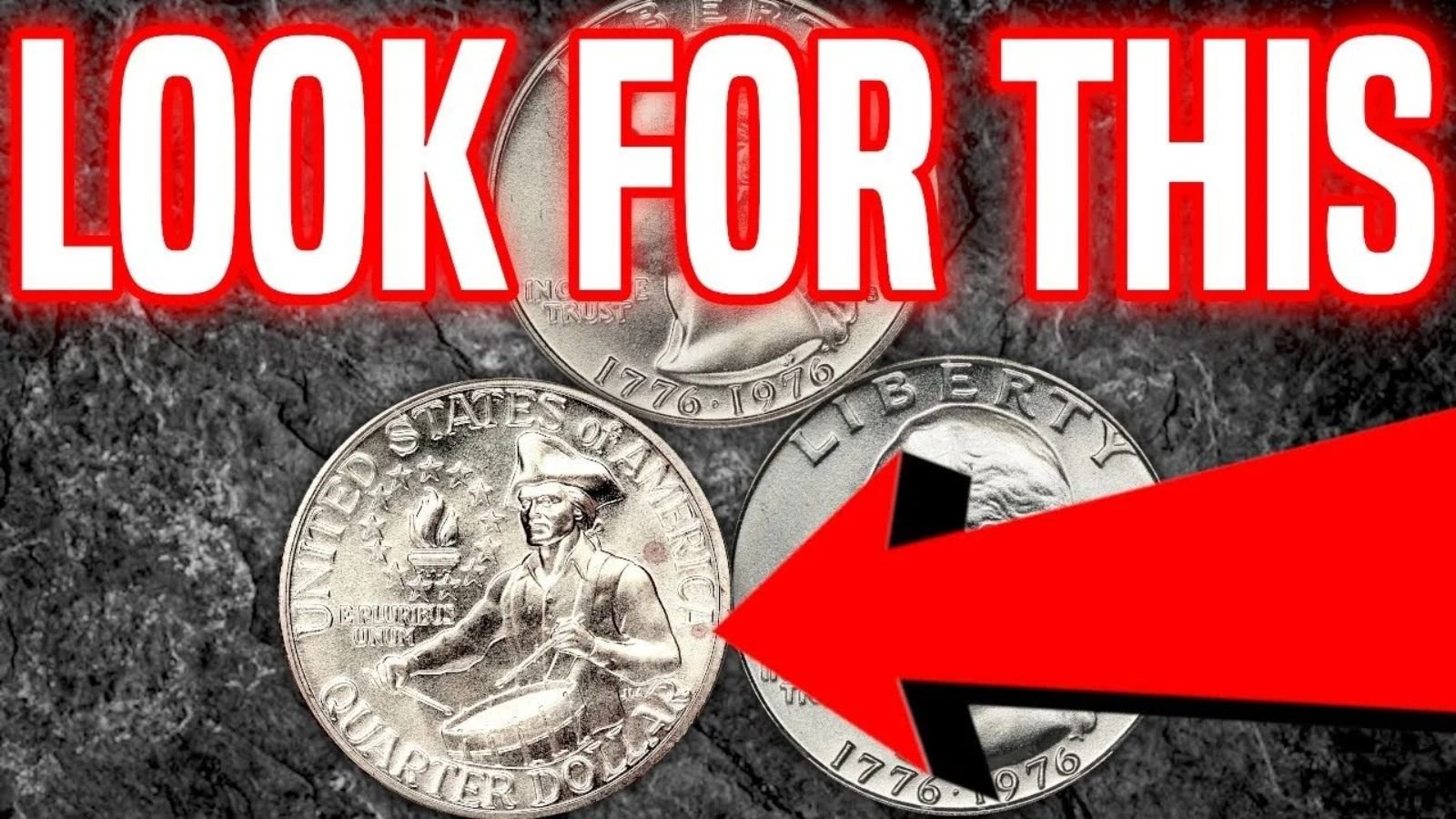Let’s be real for a second—when was the last time you gave your loose change a second thought? Most of us drop coins into jars, shove them in car cup holders, or let them rattle around at the bottom of a purse or wallet. But what if one of those coins, that humble-looking quarter you got as change from your morning coffee, was worth thousands—or even more? As unbelievable as it might sound, it’s true. In fact, if that coin happens to be a Rare Bicentennial Quarter, you could be sitting on a veritable jackpot and not even know it.
Far from being just a forgotten relic of spare change, the Rare Bicentennial Quarter has captured the attention of numismatists and collectors around the globe. With the right attributes, these coins can fetch hundreds, thousands, or in extreme cases, even up to a million dollars at auction. But what makes these quarters so valuable? Why are people scouring their change jars in hopes of finding one? Let’s explore the history, significance, and hidden value of this patriotic piece of American coinage.
This Rare Bicentennial Quarter Is Valued at $677,777 – Still in Circulation!
A Patriotic Tribute: The Birth of the Bicentennial Quarter
In 1976, America marked a monumental milestone—its 200th birthday. To commemorate the bicentennial of the United States, the U.S. Mint released a special coinage series. This series included redesigned versions of the quarter, half dollar, and dollar coins. Each was minted to honor the country’s independence and historical journey. But it was the quarter that truly captured the public’s imagination.
Unlike standard quarters, which display a single year, the Bicentennial Quarter bears the dual date “1776–1976,” prominently displayed on its obverse. This wasn’t just a design choice—it was a declaration, a tribute to 200 years of liberty, revolution, and resilience. The reverse of the coin was even more striking. Created by Jack L. Ahr, the design features a colonial drummer boy poised in a moment of stoic pride, with a torch surrounded by thirteen stars representing the original colonies.
The Rare Bicentennial Quarter was struck at three minting locations:
-
Philadelphia Mint (no mint mark)
-
Denver Mint (with a “D” mint mark)
-
San Francisco Mint (with an “S” mint mark)
The most remarkable of these are the San Francisco coins, some of which were struck in 40% silver rather than the standard copper-nickel clad. These silver coins were specifically created for collectors and were not intended for general circulation. That’s part of what makes them so sought after today.
Why the Rare Bicentennial Quarter Is a Collector’s Dream
Now, you might be wondering: if millions of Bicentennial Quarters were minted, why are they considered rare? The answer lies in the details—specific versions, minting errors, condition, silver content, and even flukes of fate all play a role. Not all Bicentennial Quarters are created equal, and only a select few are considered truly rare.
1. Minting Errors: Flawed, but Worth a Fortune
Ironically, perfection isn’t what drives up a coin’s value—it’s the imperfections. Minting errors can dramatically increase a coin’s value, especially when those errors are severe or unique. Here are a few examples:
-
Double Strike Errors – These coins were struck more than once, creating a shadow-like duplication in the design.
-
Off-Center Strikes – When the coin is not aligned properly during striking, part of the design is off the edge or missing.
-
Die Cracks or Cuds – These occur when the die used to mint the coin begins to crack or break, leaving raised, misshapen areas on the coin.
-
Clipped Planchets – A coin that’s missing a portion of its metal due to a misfeed in the minting process.
These kinds of mistakes are rare, and when found on a Bicentennial Quarter, they often catapult the coin’s value into the hundreds or thousands of dollars. It’s not just a coin anymore—it’s a one-of-a-kind anomaly.
2. Uncirculated Condition: Preserved Like New
Condition is everything in coin collecting. Coins that have never been circulated—meaning they’ve never been used in everyday transactions—are considered uncirculated. These coins still retain their original luster and intricate design details, making them incredibly appealing to collectors.
A Rare Bicentennial Quarter in uncirculated or mint-state condition, especially when certified by grading services like PCGS (Professional Coin Grading Service) or NGC (Numismatic Guaranty Company), can fetch anywhere from a few hundred to several thousand dollars. Combine that pristine condition with a mint error or silver content? Now you’re talking big money.
3. Silver Content: Precious Metal Premium
The San Francisco Mint’s silver strikes are where things get really interesting. These coins were produced with 40% silver content, giving them intrinsic value above and beyond their face value. Originally released in special collector sets, these quarters were never meant to be spent on a soda or bus fare. Yet, some found their way into circulation by accident.
Today, even a circulated 40% silver Rare Bicentennial Quarter can bring in $10 to $50 based solely on its metal content. In uncirculated or proof condition, values can jump exponentially, especially when other factors like rarity and errors are involved. It’s not hard to see why collectors eagerly pursue these pieces.
The Rare Bicentennial Quarter Market: What Are They Really Worth?
Let’s break it down with some realistic estimates based on current collector trends and market values:
-
Standard Circulated Bicentennial Quarters: Worth between $0.25 and $0.50, primarily of interest for novelty.
-
Uncirculated Bicentennial Quarters: These can sell from $100 to $500, depending on the grade and preservation.
-
40% Silver Bicentennial Quarters: Valued around $10 to $50, more if combined with rare errors or in pristine condition.
-
Error Quarters: These range widely, with some selling for $500 to $3,000+, depending on the error type and condition.
-
The Million-Dollar Club: An extremely rare specimen of the Rare Bicentennial Quarter, possibly exhibiting a combination of high-grade preservation, dramatic error, and unique provenance, has reportedly sold for upwards of $1 million.
Could There Still Be Rare Bicentennial Quarters in Circulation?
Yes, absolutely. While many Rare Bicentennial Quarters have been scooped up by collectors over the decades, there are still plenty floating around in everyday circulation. You might even find one in your pocket change without realizing it. Because of the massive mintage, especially in 1975 and 1976, these coins are still quite common. But the valuable versions—the ones with errors, silver content, or mint-state condition—are what collectors dream of.
Collector’s Checklist: How to Spot a Rare Bicentennial Quarter
Ready to hunt for treasure in your own change jar? Here’s how to identify a Rare Bicentennial Quarter:
-
Examine the Edge: A typical copper-nickel quarter will show a copper-colored stripe on the edge. If the edge looks solid silver, you may have a 40% silver coin.
-
Look for the “S” Mint Mark: Indicates it came from the San Francisco Mint, which produced both clad and silver versions—often for collector sets.
-
Inspect for Errors: Use a magnifying glass to search for double strikes, off-center features, die cracks, or clipped planchets.
-
Weigh It: A clad quarter weighs about 5.67 grams, while a silver one is closer to 5.75 grams. A small difference, but it matters.
-
Get It Graded: If you suspect you’ve found something special, have the coin professionally graded and authenticated. This protects its value and confirms its status.
Final Thoughts: Hidden Value in Plain Sight
The Rare Bicentennial Quarter is more than just a piece of change—it’s a snapshot of American history, a celebration of independence, and for a lucky few, a ticket to unexpected riches. Whether you’re a seasoned collector or a complete beginner, taking the time to inspect your coins could open up a whole new world. And let’s be honest—there’s something thrilling about the idea that a coin sitting in your junk drawer could be worth thousands.
So, before you dismiss that old quarter as just another coin, pause and give it a second look. You might just be holding a Rare Bicentennial Quarter, a seemingly ordinary object with an extraordinary story—and possibly an extraordinary value.

